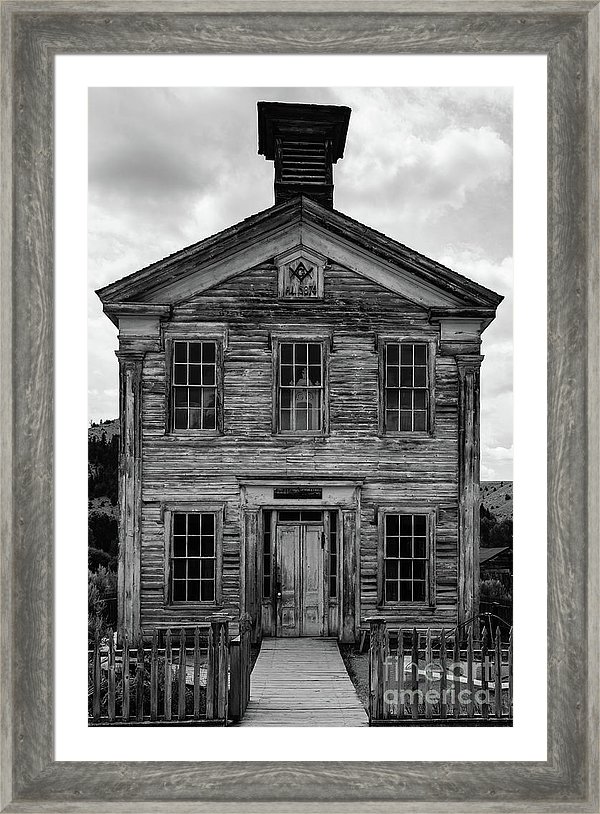Scruffy, hard-scrabble single men were typically the first type of inhabitants in a newly discovered gold area. But eventually, as the area grew and expanded from a collection of tents into a more semi-permanent settlement, women and children began to move in. Also, more established social networks such as Mason lodges would be established.
In the town of Bannack, MT, the townsfolk cleverly combined a Masonic Lodge (used mostly in the evening) with a schoolhouse below (used mostly in the day) into a single building. Strange having secret rites going on above the kiddies heads as they learned to read and write?
Perhaps not that strange on the frontier where practical considerations of limited lumber and time to dedicate to non-gold panning activities.
Having a fraternal meeting hall and a one-room schoolhouse share the same building perhaps seems like an odd combination but maybe it wasn’t all that strange after all.
Masons were a strong presence in Montana Territory and the education of children on the frontier was one of the first considerations in the earliest mining camps. A double ceiling and floor between stories kept the ground floor school and the upstairs meeting room entirely soundproof and separate to protect the Masons’ secret rites.
http://ellenbaumler.blogspot.com/2012/07/bannack-school.html
The building included an outside stairway to provide access to the meeting room, so the members did not have to disturb the children. At the peak of the room is a carved wooden sign with the lodge numbers and emblem of the Masonic square and compass.
… Bannack had no piece of wood large enough or smooth enough for the purpose. Then a woman came forward and offered her treasured breadboard brought from her home back east. W. G. Blair carved the lodge numbers and the Masonic square and compass upon it. Workmen installed it beneath the peak of the roof. The Masons used the lodge hall only briefly, but the school long served Bannack’s children.
http://ellenbaumler.blogspot.com/2012/07/bannack-school.html
